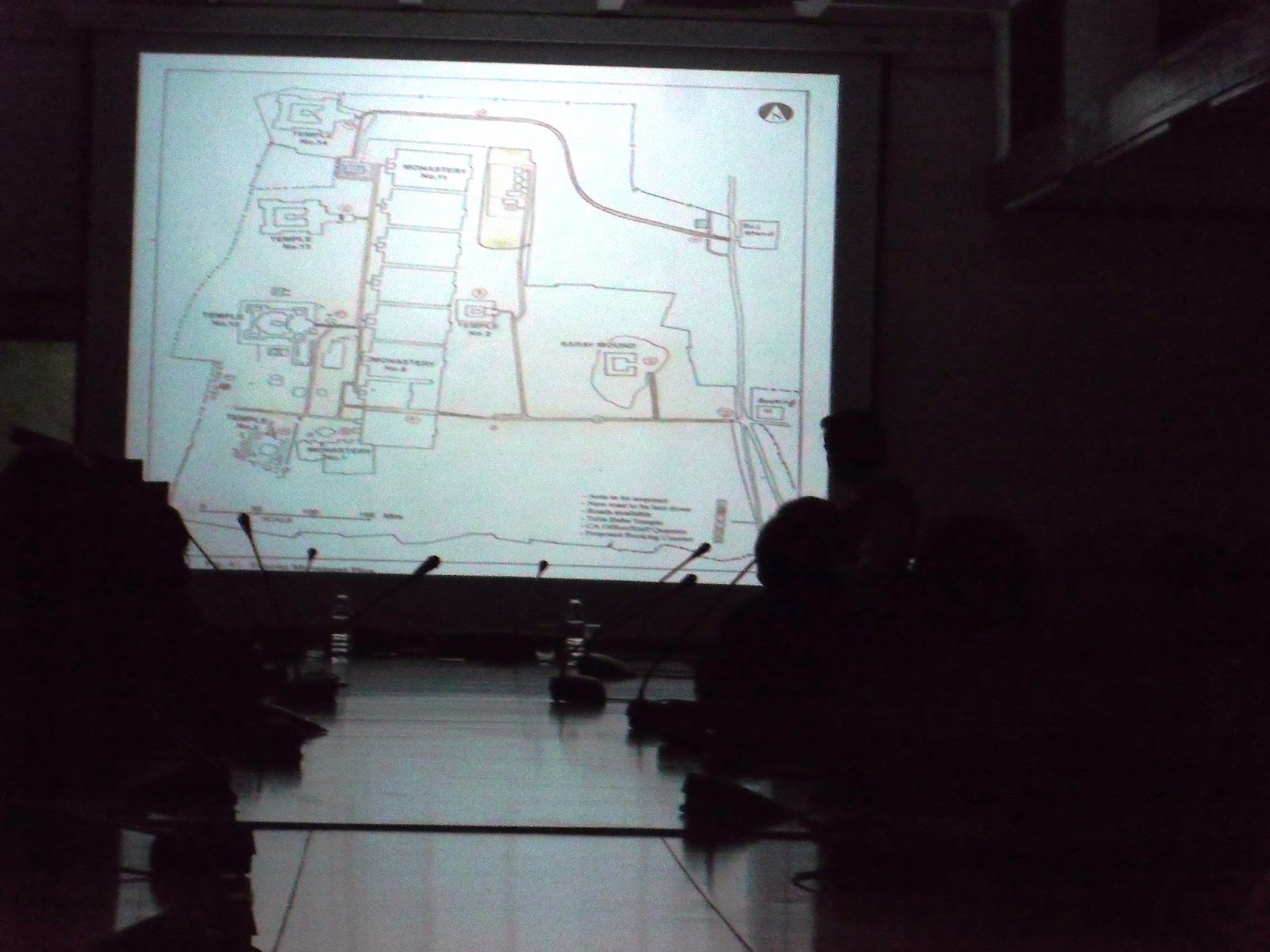(This is the third part of my travelogue of my series over the Purna Kumbh Mela - 2013, 'The Immortal Kumbh Mela'. This post is in continuation of the second post. The posts in this series will be in a continuous form.)
I decided to take a detour through a part of the Mela ground which was close to a large sewer looking water body (some distance from the river).. I started walking while avoiding the human faeces and cow dung which was scattered around that place.. I observed people from the villages (visiting the mela) who had set up their tents on that part of the ground and were cooking close to the very area where they were relieving themselves..
Barbers had set up shop there as well for the benefit of those pilgrims who wished to tonsure their heads.. I saw a young boy doubling up as a barber to do the needful..
After walking some distance I tried to make my way back to the road to ensure that I didn't get thrown off track in the vast maze of tents.. For that I ended up crossing the relieving area of another group of sadhus, tip toe over a sewage pipe e.t.c. After so much effort (by that time I had already walked, been pushed, shoved and squashed around for close to four hours) i came across a signboard which said Sangam - 2 kms ahead. Taking a look at the ocean of people ahead and then taking another look at that signboard made me feel dismayed and I half thought of going back.. How much more do I need to walk I asked myself..
I saw a group of eateries and decided to have a snack and (in a cool shade) regain my composure.. So, while I was munching on Moong Dal ke Pakorey (unfortunately without shredded radish and the chutney) and contemplating what to do next, a gentleman (a photographer who was covering the Mela as well) came and sat on the seat next to me, as it was the only seat available in the entire makeshift eatery..We started talking and after an hour long discussion (nothing refreshes you like a conversation with a like minded person) I found the wind back in my sails to move forward..
As I resumed my long walk towards Sangam I began to realise one thing.. You cannot take the Kumbh Mela for granted.. It is not a large bazaar, not a carnival and the arrangements are not to the extent it should be at all.. One requires either tremendous fortitude or tremendous inspiration to get through it.. I was glad that I was able to muster the courage to travel around the entire fair, wading amongst the oceans of people who had thronged to it..
An Ascetic taking a break between the long walk from the Sangam to the railway station
I decided to take a detour through a part of the Mela ground which was close to a large sewer looking water body (some distance from the river).. I started walking while avoiding the human faeces and cow dung which was scattered around that place.. I observed people from the villages (visiting the mela) who had set up their tents on that part of the ground and were cooking close to the very area where they were relieving themselves..
Observe the tents in the temporary residential area (for the monks, ascetics and pilgrims) in the Kumbh Mela Grounds
Pilgrims camping in the Kumbh Mela Grounds, many of them without a tent or a sleeping bag
Pilgrims cooking in the mela grounds
A young barber goes about his business, tonsuring the heads of pilgrims.. Their business is brisk during such religious fairs.. Tonsuring heads is a common religious practice amongst Hindus..
Barbers had set up shop there as well for the benefit of those pilgrims who wished to tonsure their heads.. I saw a young boy doubling up as a barber to do the needful..
After walking some distance I tried to make my way back to the road to ensure that I didn't get thrown off track in the vast maze of tents.. For that I ended up crossing the relieving area of another group of sadhus, tip toe over a sewage pipe e.t.c. After so much effort (by that time I had already walked, been pushed, shoved and squashed around for close to four hours) i came across a signboard which said Sangam - 2 kms ahead. Taking a look at the ocean of people ahead and then taking another look at that signboard made me feel dismayed and I half thought of going back.. How much more do I need to walk I asked myself..
A signboard giving directions towards the Sangam
I saw a group of eateries and decided to have a snack and (in a cool shade) regain my composure.. So, while I was munching on Moong Dal ke Pakorey (unfortunately without shredded radish and the chutney) and contemplating what to do next, a gentleman (a photographer who was covering the Mela as well) came and sat on the seat next to me, as it was the only seat available in the entire makeshift eatery..We started talking and after an hour long discussion (nothing refreshes you like a conversation with a like minded person) I found the wind back in my sails to move forward..
A sea of tents in the Kumbh Mela Grounds
As I resumed my long walk towards Sangam I began to realise one thing.. You cannot take the Kumbh Mela for granted.. It is not a large bazaar, not a carnival and the arrangements are not to the extent it should be at all.. One requires either tremendous fortitude or tremendous inspiration to get through it.. I was glad that I was able to muster the courage to travel around the entire fair, wading amongst the oceans of people who had thronged to it..











































